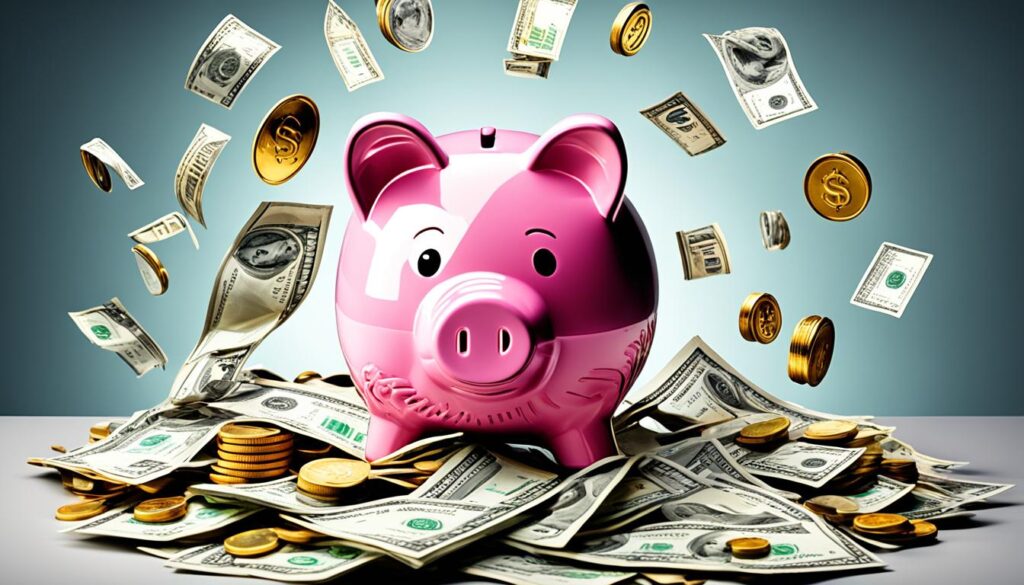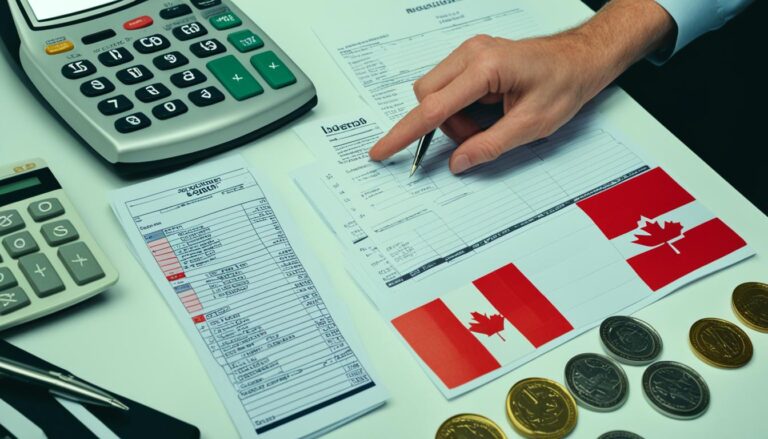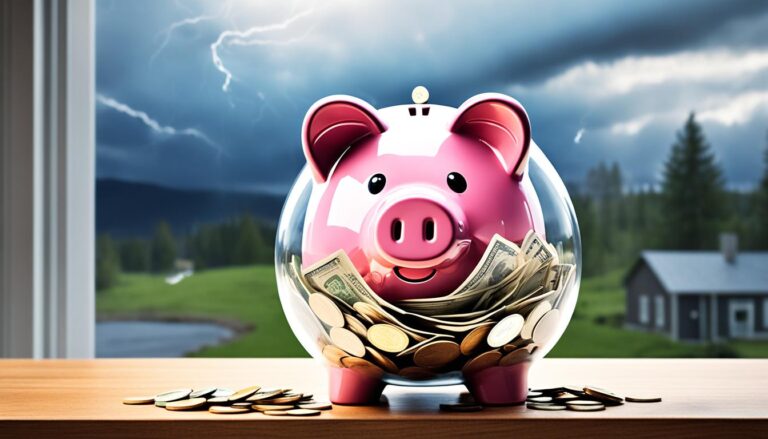Why an Emergency Fund Is Your Financial Lifeline: Top 7 Unexpected Expenses You Should Save For
An emergency fund is a type of savings you use to pay for unexpected expenses. Your emergency fund is your financial safety net. Life is full of surprises, and that’s especially true when it comes to money. It helps you stand strong during tough times. Whether it’s a car repair or a medical bill, having some money set aside can keep you afloat.
Building this fund brings you peace of mind and you can start by saving a bit from each paycheck. This way, you’re always ready, no matter what financial challenges life brings your way. As a financial advisor, I recommend that you tailor your emergency fund to fit your life. I understand that financial principles are contextual – you have to apply the principle to the peculiarity of your life. This implies that the principle of building emergency funds may differ based on different life circumstances such as employment status, marital status, educational status, and streams of income.
Whether you’ve got kids or a variable income, it’s wise to have a plan in place. Now, let’s dive into the real advantages of having this financial cushion.
Key Takeaways
- Understand the vital role an emergency fund serves as both a financial safety net and mental comfort in Canada.
- Aim to allocate at least 10% of your earnings toward emergency savings to enhance your financial preparedness.
- Keep your emergency funds in accessible, low-risk formats to prevent potential losses when you need to use them.
- Personalize the size of your emergency fund based on individual circumstances and expected living costs.
- Utilize unexpected windfalls, like tax refunds, to give a substantial boost to the growth of your emergency fund1.
- Remember that shoring up emergency savings is key to minimizing financial stress and maintaining long-term financial health1.
the importance of saving for unexpected expenses
We’ve established that saving for unexpected expenses is like building a financial safety net. Think about it – What decision did you make the last time you had an unexpected expense? You take a payday loan or a high-interest debt? Building emergency fund is crucial for avoiding taking debt from sources like this. Life is full of surprises, making an emergency fund a must-have for financial stability.
At the end of 2023, 7 out of 10 (69%) Canadians worry about handling sudden expenses over $1,000. According to a survey by Statistics Canada, 1 in 4 Canadians are unable to cover an unexpected expense of $500. The recommended amount for an emergency fund is three to six months’ worth of expenses to cushion against economic hardship.
For instance, let’s say you earn $3000 monthly and have a monthly expense of $1800. Your emergency fund should be in the range of $1800 times 3 to $1800 times 5. That’s a range of $5400 to $9000. However, you don’t have to be daunted by the huge numbers; starting small is the way to go. If you save $5 a week, you would have $260 a year, showing most people can achieve this goal.

Good financial planning involves setting clear goals and saving accordingly. Cutting small expenses or using a high-interest savings account can boost your emergency funds. This way, you can earn some interest even while you build your emergency funds.
Here is a breakdown of your potential year-end total based on the amount you save weekly.
| Weekly Savings Amount | Year-End Total |
|---|---|
| $5 | $260 |
| $10 | $520 |
| $15 | $780 |
| $25 | $1,300 |
An emergency fund brings financial security and eases stress during money crises. Growing your fund improves readiness for financial surprises. It strengthens your financial health and lessens reliance on high-cost borrowing.
Where should you save your emergency Fund?
I have mentioned earlier that it is a good idea to save enough to cover three to six months of your living costs. Normally, when you think of saving your money, the first thing that comes to mind is a traditional savings account.
But No! Please don’t do that to yourself. Read my article on why you should save your emergency fund in a High-Interest Savings Account.
You should put your emergency money in places where you can get to it easily, like high-interest savings accounts (HISA), Tax-Free Savings Accounts (TFSA), or money market funds. Adding a little bit of money regularly, especially by automatic transfers, helps grow your fund. And it’s smart to keep checking and adjusting your fund as your life or income changes.

Making a realistic budget and cutting back on non-essential expenses will help save more money for emergencies. Here’s a simple plan:
- Spend less on eating out and fun activities.
- Stay disciplined by saving a small amount regularly. A consistent small amount is better than an irregular lump sum.
- Add unexpected money, like tax refunds, or gifts, to boost your emergency fund.
About 26% of Canadians don’t have an emergency fund yet. This shows how important it is to be financially ready for surprises.
| Tools | Use in Emergency Fund |
|---|---|
| High-Interest Savings Account | Secure, accessible, grows savings |
| Preauthorized Automatic Transfers | Ensures regular savings contributions |
| Tax-Free Savings Account (TFSA) | Increases savings without tax penalties, with limits |
Top 10 Unexpected Expenses You Should Save For
Having the safest tools and strategies that can help you achieve your goal of building an emergency fund, here are the top 10 unexpected expenses that justify your need for an emergency fund.
1. Car Repairs and Maintenance
In Canada, putting an uninsured car on the road is illegal. This helps protect you and other road users in the event of an accident. However, your car repairs and maintenance is not covered by any insurance. Every car owner in Canada should plan a budget for unexpected car repairs and regular upkeep.
This planning is the best way to handle sudden expenses from owning a car. By adding a car emergencies section to your overall emergency fund, you reduce financial strain on yourself. This also keeps your car running well, protecting your money and ability to get around.
Car troubles like engine issues, flat tires, or battery failures can quickly become big problems. As shown in the table above, putting away just $25 a week can grow to $1300 after a year. This is to show you that little drops can truly make a mighty ocean.
But I suggest that you consider putting away about $50 to $100 weekly depending on how much you earn. You want to build your emergency fund fast enough so it is robust enough to realistically handle any emergency in your life.
Facing engine troubles, flat tires, or needing a new car battery can mess up your day and hurt your wallet. To avoid this, prepare for this unexpected event with your emergency fund.
Setting up automatic savings is a great idea. You can have money go straight into a car repair fund right after you get paid. This way, you’ll have money ready for repairs without any stress.
| Weekly Saving Amount | Annual Savings | Potential Use |
|---|---|---|
| $5 | $260 | Battery Replacement |
| $10 | $520 | Engine Minor Repairs |
| $15 | $780 | Comprehensive Maintenance |
| $20 | $1040 | Major Repairs |
By following these financial tips, you can handle unexpected car repairs without risking your financial safety or mobility. Being smart about saving for repairs not only keeps your car in good shape. It also strengthens your finances overall.
2. Medical Emergencies
Unexpected medical costs can arise from accidents, sudden illnesses, or unforeseen surgeries. While our universal healthcare covers many needs, it sometimes falls short, especially for specialized or quick care. The cost of a medical emergency will largely depend on if you have an existing health insurance plan. If you do, you should check your health insurance policy to know what it covers. Then proceed to take advantage of your policy if your medical emergency is covered.
If you do not have a health insurance policy, consider subscribing to a government-sponsored plan through your provincial government or buy private health insurance.
You can also look into employer-sponsored health insurance plans. Fortunately, some of these group plans cover lots of medical expenses. In some cases, employer-sponsored health insurance plans will only pay for a fraction of your medical expenses while you’ll be required to pay the rest.
Also, I want to mention that if your medical need is work-inflicted – I mean if you got injured at work, do well to explore the benefits offered by the work safety board of your province in Canada. For example, we have Worksafe BC in British Columbia, Workplace Safety and Insurance Board (WSIB) in Ontario, WCB-Alberta, Workers’ Compensation for Quebec (CNESST), and other provinces have equivalents of these work safety bodies too. After you’ve exhausted all available means of lowering your medical expenses, you can then pay out of pocket from your emergency funds.
Dealing with the healthcare system in an emergency can be hard if you’ve not been preparing. But a good emergency fund helps you manage.It allows for faster, better decisions during medical crises, making sure money worries don’t add to your stress. Begin preparing financially today by saving for these unplanned events.
3. Home Repairs and Maintenance
As a homeowner, there are two types of expenses you will face – planned and unplanned expenses. Planned expenses may be things like changing the roof, upgrading the furniture etc. You can set your own timeline and budget to address these planned changes.
But guess what? An unplanned home repair expense is a humbler. It cares less about your timeline and budget. Unplanned home emergencies can range from plumbing problems causing water damage to heating breakdowns in winter. Not doing regular maintenance, like cleaning eavestroughs, can lead to bigger problems such as flooding. This increases repair costs.
Planning your budget for home maintenance can reduce stress. Saving a bit every week can help grow your emergency fund. Saving $10 weekly adds up to $520 a year for repairs. Earlier, I recommended saving between $50-$100 weekly to build your emergency fund fast.
But based on experience, it’s been considered wise to allocate 3% to 5% of your home’s value for yearly upkeep. For a $500K home, this means $15,000 to $25,000 for maintenance and emergencies. This helps ensure you’re prepared.
A good rule of thumb is to budget from 3% to 5% of your home’s value for these costs on an annual basis.
Money.ca
4. Job Loss or Reduced Income
Well, I don’t know why unexpected expenses due to job loss is number 4 on my list. While it may not happen very often, job loss or reduced income is the major reason why an emergency fund is often encouraged. Losing a job brings big financial challenges. It affects your daily life and future money stability. Without regular income, paying daily expenses is hard. Having a bit of savings – in this case, an emergency fund, can ease money worries a little.
Let’s paint a scenario of job loss and reduced income.
Mr. John is a Canadian resident who works 2 jobs each of which pays him $3000 monthly. This means Mr. John earns a total of $6000 monthly. His total monthly expense is $4500 leaving him with a cashflow of $1500 monthly. Mr. John had an issue with his boss at one of his job and was suspended indefinitely while an investigation is being carried out. The investigation might take about 3-4 months before it’s concluded. Mr. John is left with a $3000 monthly income to address his $4500 monthly expenses.
In this case, if Mr. John has been saving his emergency fund, he will be able to take care of his basic expenses without running into debt or being under pressure to take up a job he does not like.
Unexpected job loss or lower income can happen suddenly in Canada. This can be due to economic shifts or industry changes. An emergency fund gives you a buffer, letting you cover essential costs without the stress of finding a new job right away.
Financial safety net after a job loss
Consider looking into benefits like Employment Insurance (EI). This is applicable when you lose your job or all recognized sources of income. An EI helps by replacing some of your income if you lose your job. Also, know about severance and vacation pay. These are based on how long you’ve worked and your pay level. They add more safety during job changes.
A good emergency fund gives you security and control when your career hits rough patches. Saving bit by bit for unemployment means you and your loved ones can get through times of less income or job loss. You’ll face fewer disruptions in your everyday life.
It’s not just about saving but building a solid financial base. Begin where you are, and step by step, move toward safety.
5. Unexpected Pet Expenses
According to Dogster, the total pet population in Canada is expected to be 28.51 million in 2025. 8.5 million cats were owned by Canadians in 2022. 7.9 million dogs were owned by Canadians in 2022. Made in CA published the following statistics about pets in Canada:
- 58% of Canadians own a pet.
- Canadians’ spending on pets increased by 17.1% from 2018 to 2021.
- In 2019, Canadians spent $9 billion on their pets.
- Veterinary bills take a significant part of the pet spending budget.
- People who take a puppy or a pet face 30%-50% higher expenses in the first year.
- Only 3% of Canadian pet owners have their pets insured.
While pets make our lives better, they come with costs we don’t foresee. Veterinary care can be expensive. It includes emergency visits, treatment for illnesses, and surgeries. The usual cost for pet care in Canada is about $650 yearly. Yet, emergencies can raise expenses to thousands. With only 3% of our furry friends being insured, this means many families pay pet-related expenses directly out of pocket. So if we love our pets and want them to be around for as long as possible, it’s crucial to be ready financially for any situation, from small accidents to big diseases and surgeries.
Common Pet Emergencies to Prepare For
Emergencies can happen suddenly, and pets are not immune. Accidents like broken bones or eating something harmful can lead to emergency visits. These can cost from $800 to $1,500 each time. Such emergencies highlight the importance of having funds saved for pet emergencies, to avoid financial surprises.
Remember, regular vet check-ups can save money in the long term by finding problems early.
Also, you can consider adding pet insurance to your budget. Even though it seems like extra cost upfront, it can cut down on the price of emergency treatments and surprises concerning your pet’s health.
Continuing the special relationship with your pet means getting ready for the unexpected. A little financial planning can go a long way. It lets you enjoy your pet’s company without worrying about emergencies.
Invest in your pet’s well-being and your financial peace of mind by saving judiciously for pet emergencies.
6. Technology and Appliance Repairs
Be it a phone fix, computer glitch, or a fridge breakdown, each can cost a lot without warning. For example, a new fridge or the latest smartphone might need hundreds or thousands of dollars. An emergency fund for these situations keeps your budget safe, ensuring life goes on as usual. Looking after your gadgets and appliances reduces the chance of sudden breakdowns. Yet, if they do fail, having savings is a lifesaver.
Honestly, these expenses do come up so often thus why they are referred to as “unexpected expenses”. The trick is to always have it ready so you can have a means of solving any financial challenge that arises. Below is a table showing examples of technology and appliance repair/replacement costs.
| Item | Cost of Repair (CAD) | Cost of Replacement (CAD) |
|---|---|---|
| Smartphone | $120 | $999 |
| Laptop | $200 | $1500 |
| Washing Machine | $250 | $800 |
Conclusion
An emergency fund is key to financial safety in Canada’s unpredictable economy. It protects against unexpected costs like job loss, income reduction, car or home repairs. Experts advise saving three to six months’ living expenses. This goal depends on your job stability and risk comfort. It’s a shield against life’s financial shocks.
Embracing Financial Well-being
A sound emergency fund brings financial peace. Having savings for three to six months helps handle crises without worry. However, building an emergency fund is just one of many strategies to ensure your financial well-being. Speak with a Financial educator/advisor who can help you figure out a recession-proof financial future. Regularly checking your fund keeps it in line with your life goals.
Join the Conversation
We invite you to share your stories of building a strong emergency fund. Your experiences and tips can help others. Together, we can face financial challenges with confidence. Let’s ensure our financial security against unexpected events. Subscribe to my weekly newsletter to receive regular updates on personal finance. Let’s continue the conversation in the comment section. See you there 🙂

Ogunjobi Oluwamuyiwa Felix preferred to be called Muyiwa Felix, is a personal finance coach and Insurance advisor. He creates content that addresses the core of personal finance in Canada, the United States, and the world at large. Daily, he meets up with clients who are interested in financial risk management, income protection, wealth-building, retirement planning, and tax-efficient investing strategies.





